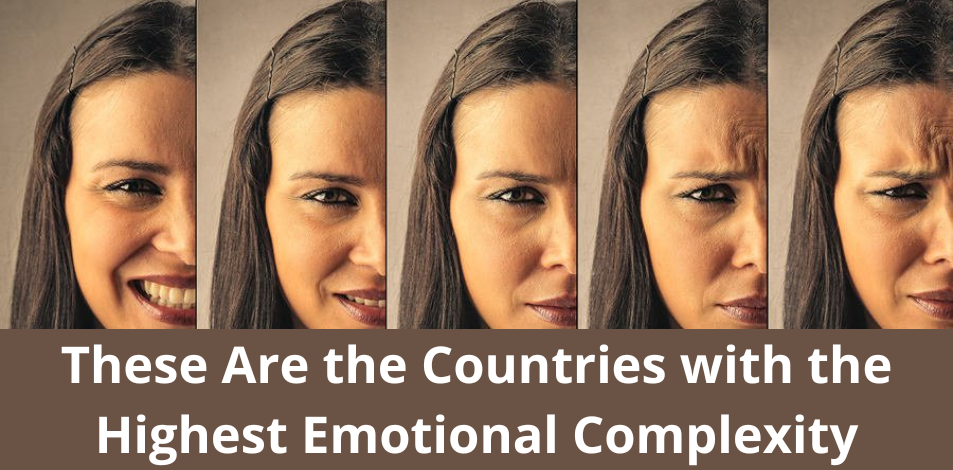
Emotional complexity varies from place to place, not just from person to person. Multiple emotions are common, but very different.
If you’re not aware of your emotional complexity, let me remind you. You know very well that there are times when you feel angry and in love at the same time. These sentiments, of course, are just examples. You can feel many types of emotions together, even more than just two. What’s interesting is that there are two different definitions of emotional complexity.
“Emotional dialectic,” which means feeling positive and negative emotions at the same time.
Emotional differentiation is when someone can describe the discrete emotions they feel.
Regional differences in emotional complexity
Emotional complexity varies slightly from country to country. You can see this in a study conducted by Phoebe Ellsworth of the University of Michigan and Alex Huynh and Igor Grossman of the University of Waterloo. The three examined 1.3 million English-language web pages from 10 countries to see how often the word positive emotion appeared within negative emotion phrases. They noticed a difference between the Eastern and Western worlds regarding mixed emotions.
University students from a selection of countries were also tested to see how they react to different life situations, including being injured or being with friends. Once again, there was a clear difference between eastern and western countries.
The researchers discovered that countries with the highest mixed emotions had a higher rate of interdependence, which basically means helping others. Those who are more prone to codependency also link emotions to their interactions with others in general and with the environment.
Countries with the highest degrees of emotional complexity
- Japan
The Japanese seem to have one of the highest rates of emotional complexity, considering that they tend to be more complex across all studies, compared to other Eastern countries and with Western countries as well. - Malaysia, Philippines and Singapore
All of these countries seem to mix positive and negative words in their written statements. The emotional complexity we see in millions of web pages shows how diverse emotions are in text. - Russia
Like Japan, Russia also places an emphasis on interdependence, showing a much higher rate of emotional complexity than other countries. They see their emotions as coming from the environment rather than from within. - India
Another country with mixed emotional capacity is India. Since mental health efforts are so different in this country, emotional complexity is welcome as a way to measure the feelings of those suffering from depression. Depression is not treated and is forgotten as it is in many other places. In India, depression is seen as a way to understand emotions and how they interact with the outside world.
Countries with less emotional complexity
It is not surprising that most of the countries with the lowest mixed feelings are Western countries. Places like the United States, Germany, and the United Kingdom experience less emotional complexity, perhaps stemming either from keeping emotions inside or from less social interaction. Canada, New Zealand, Australia and Ireland also fall short of emotional complexity.




